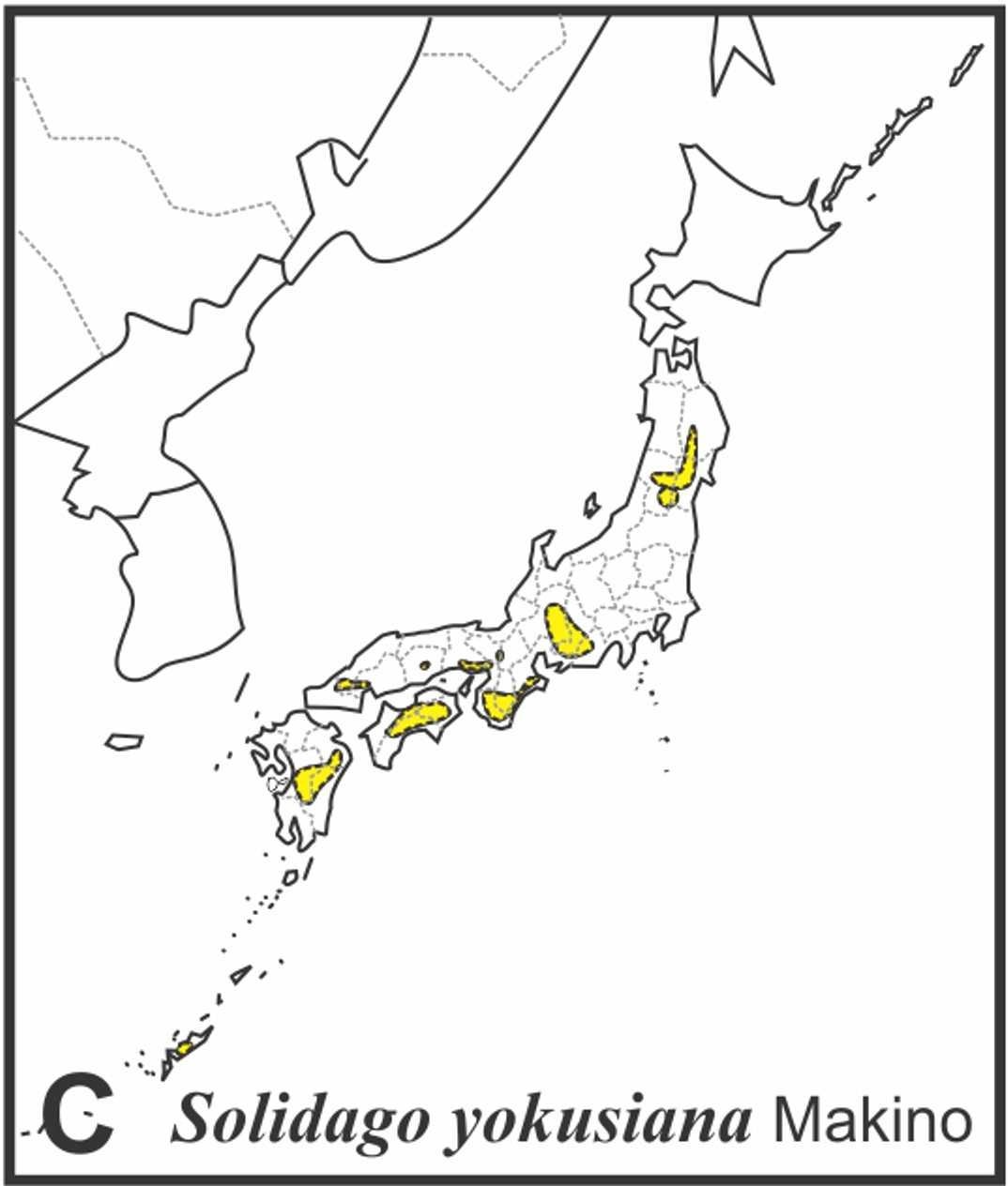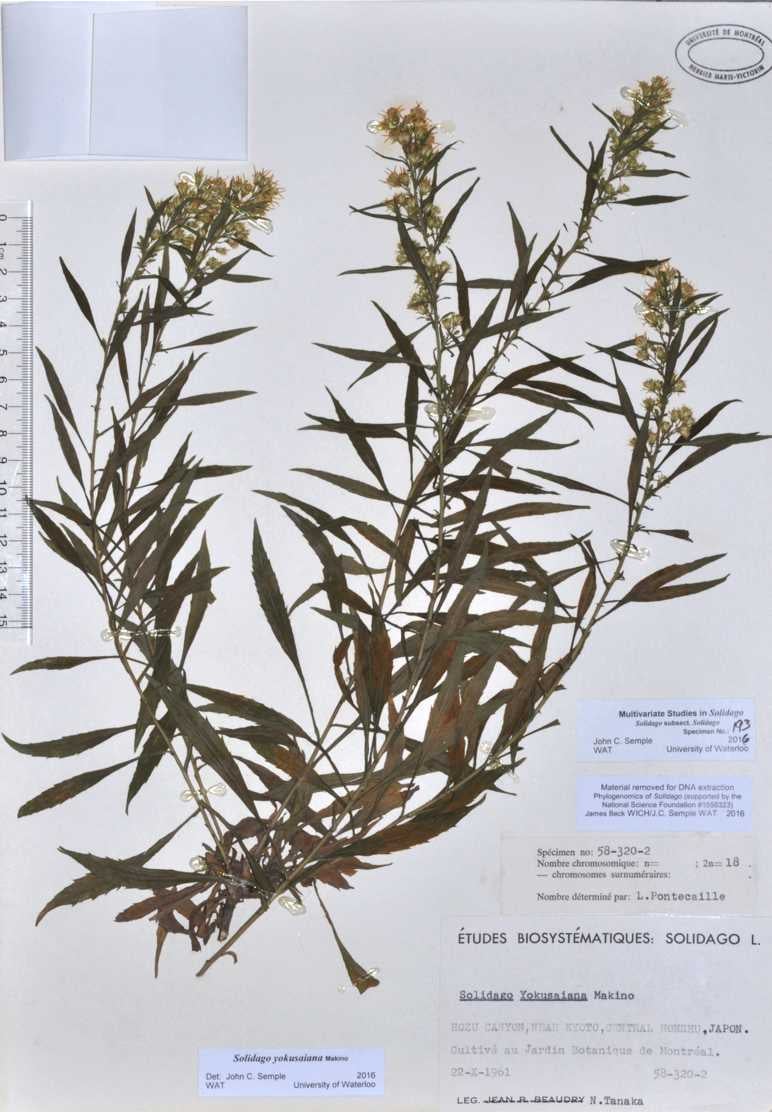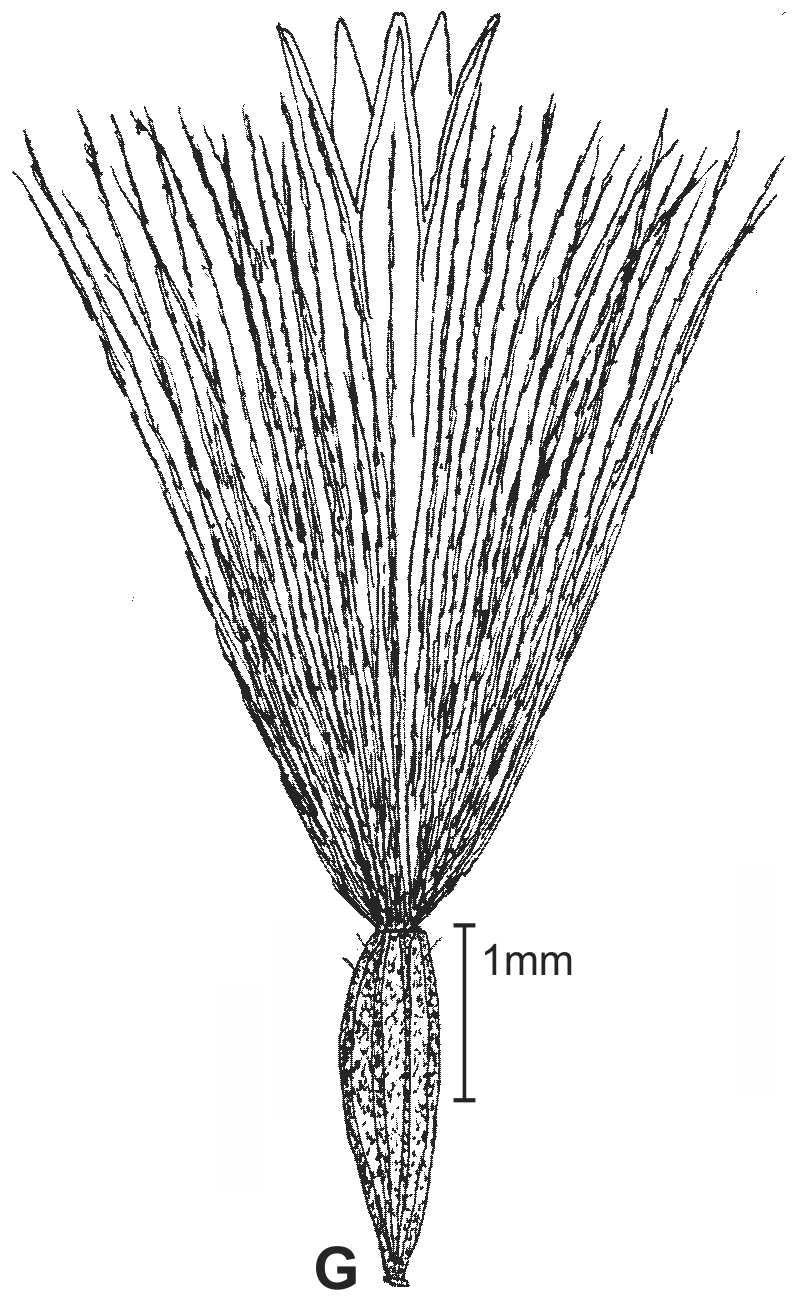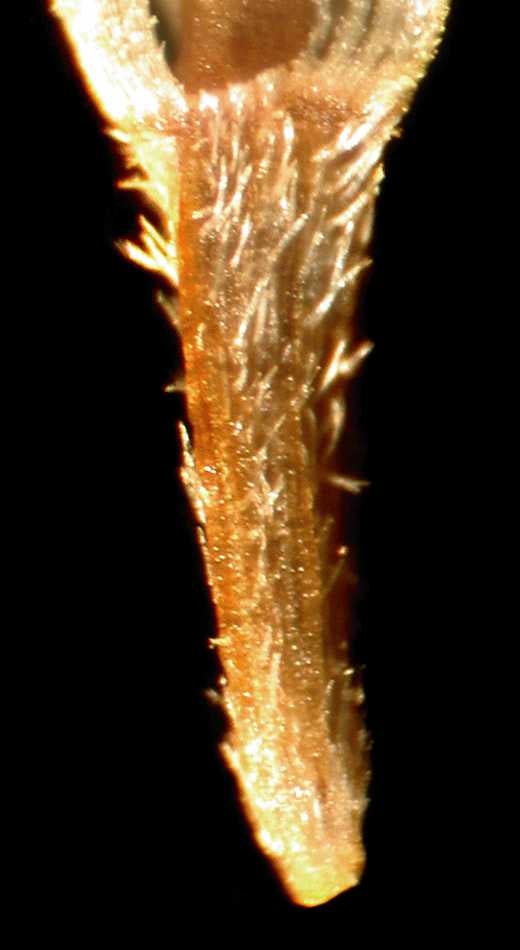Solidago yokusaiana Makino is a distinctive species of goldenrod native on rocks along streams and rivers (rheophyte) in central and southwestern Japan on Honshu, Shikoku, Kyoshu, and Okinawa. It is likely closely related to S. decurrens and S. minutissima. The fruit body is moderately hairy, unlike S. decurrens which is hairless. The leaves are narrow; mid and lower stem leaves are petiolate, sharply serrate along the distal margins and can be somewhat triplinerved (but are really brachydodromous with the outer nerve composed of enlarged portions of multiple lateral veins). The heads are small for Eurasian ser. Solidago taxa like those of S. decurrens and S. minutissima. Until recently, plants of S. yambaruensis with glabrous fruit bodies was included in S. yokusaiana but is an independently derived rheophyte.

Some of the specimens I have seen to date are F1 plants grown from seed by Jean Beaudry in Montréal in the late 1950s and earlier 1960s and pressed as cytovouchers (2n=18). Some of these cultivated plants are similar to digital images of the species posted on line (here), while other cultivated plants are atypical robust garden plants.
Synonyms: Solidago virgaurea L. var. angustifolia Makino, non Gaudich.; S. virgaurea L. f. angustifolia Matsumura
Semple and Tetsuo Ohi-Toma (2017) selected a lectotype for Solidago virgaurea var. angustifolia Makino non Gaudin and this automatically is the lectotype for S. yokusaiana which is a nom. nov. based on the Makino variety.
Five specimens of S. yokusaiana were included a posteriori in the multivariate study of S. ser. Solidago by Semple et al. (2020) and were assigned to three different species: 2 specimens to S. kurilensis with 100% probability and 99% probability , 1 specimen to S. decurrens with 100%, and 2 specimens to S. minutissima with 100% probability. The five specimens had the typical traits of S. yokusaiana and would not be easily confused with S. kurilensis, S. decurrens, or S. minutissima. Additional collections of the S. yokusaiana are needed so that the species can be included as a separate a priori group in an expanded multivariate study.
Shota Sakaguchi is thanked for providing the field digital image.
Semple, J.C. and T. Ohi-Toma. 2017. Typification of Solidago yokusaiana (Asteraceae: Astereae) a distinctive Japanese species. Phytoneuron 2017-16. 1-6.
Semple, J.C., Y. Ma, L. Tong, and M. Sorour. 2020. A multivariate morphometric analysis of Solidago sect. Solidago and S. sect. Multiradiatae (Asteraceae: Astereae). Phytoneuron 2020-38: 1–59.
Last revised 17 May 2025 by J.C. Semple
© 2025 J.C. Semple, including all photographs unless otherwise indicated.
1-5. Solidago yokusaiana. 1. Habitat and habit, photo by Shota Sakaguichi. 2. F1 cult. Beaudry 58-320-2 MT, originally from Tanaka s.n., near Kyoto, Japan. 3. Lower stem leaf, Beaudry 58-320-2 MT. 4. Heads, Beaudry 58-320-1 MT. 5. Line drawing of disc floret and fruit by JCS. 6. Immature fruit body, Beaudry 58-320-2 MT.











